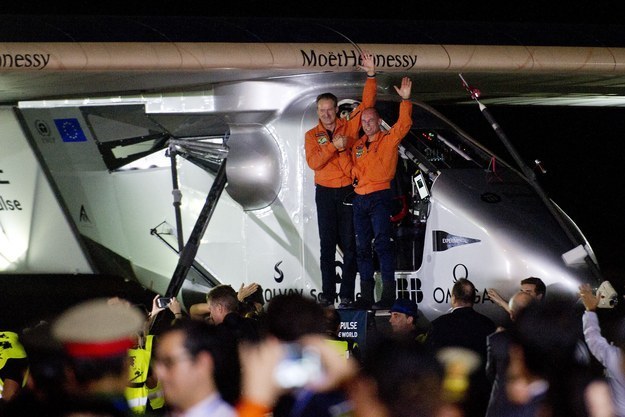Solar Impulse 2 pilot André Borschberg broke the records for longest solo flight and longest flight in a solar-powered airplane on Thursday.
Borschberg broke the records while flying the longest leg — from Nagoya, Japan, to Hawaii — of an around-the-world journey. He is expected to land on Friday.
He and fellow pilot, Bertrand Piccard, have now completed eight of the 13 legs of the journey, switching off at each segment. The next leg, from Hawaii to Phoenix, Arizona, will be piloted by Piccard.
In early March, Borshberg and Piccard kicked off the first ever around-the-world journey in a solar airplane.
The Swiss pilots, engineers, and environmentalists began in Abu Dhabi, with their flight path taking them over Asia, America, Europe, and Africa, before returning again to the Middle East.
BuzzFeed News talked to the pilots when they were exactly halfway through the epic trip, the Solar Impulse 2.
Read what they had to say below:

The men aren't exactly traveling in comfort: Only one pilot can travel in the plane at a time, and he can sleep for just 20 minute periods. For the pilots' and the plane's well-being, the journey has been broken up into 12 legs.
The upcoming flight is the longest and most dangerous. It's also the furthest a solar-powered plane will have ever flown, and the Solar Impulse 2's first cross-ocean journey.
"The six legs we've done so far have been great, but we've done them all before," 62-year-old pilot André Borschberg, who will be single-handedly flying the plane over the seventh stretch, told BuzzFeed News. "This is the exciting part, this is the proof. This is the unknown."
The seventh leg of the journey will last five consecutive days and nights, from China to Hawaii, most of which will be over the Pacific ocean. The other pilot, Bertrand Piccard, 57, will meet him in Hawaii and take over for the flight to Phoenix.

"I'm excited to leave, but I'm prepared for the worst," Borschberg, said. "Nobody has ever done this before, ever! The goal is to be ready for the unknown: I'm not sure how the plane will behave over so many days and nights."
When asked what would happen if anything went wrong during the four days over the Pacific ocean – if there are cross winds or not enough sun to charge the airplane for a night flight – Borschberg responded, "We have a life raft."
The Solar Impulse 2 has only one seat, a wingspan of over 236 feet, and weighs about as much as an average car. That's a larger wingspan than a Boeing 747, but only about 1% of a Boeing's weight.
It flies solely on solar power, which powers the plane and charges the battery that keeps the plane flying through the night.
In order for the plane to fly and to ensure Borschberg's safety, Solar Impulse has an entire team of weather experts based in Monaco attempting to predict good, sun-filled weather over the entire course of the five-day journey. This, as one can imagine, is a very difficult task. So far this stretch of the journey has been delayed almost three weeks.
"The great advantage of a plane with no fuel is that you never need to land for refueling," Bertrand Piccard, the other pilot, told BuzzFeed News. "But of course, it's not good if you are on a schedule," he joked.
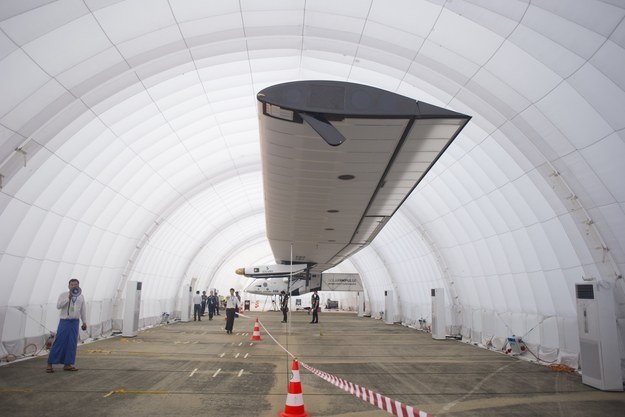
It takes quite a bit of training to stay mentally and physically intact in a tiny metal tube with no temperature or pressurization for 120 hours straight. In fact, it takes 12 years of training.
The most important part of the training was learning "polyphasic sleep," the practice of sleeping for only 20 minute periods 10 to 12 times a day.
Many years ago, Piccard trained himself to be able to lapse quickly into a deep sleep using self-hypnosis. In his words, he "makes an abstraction of the outside world" to "disassociate from the stress of the cockpit."
Piccard has trained Borschberg in these methods, and they have both been using them in their day-to-day lives for years. They are woken up by a vibrating alarm built into the plane that goes off after 20 minutes, or in the event of an emergency or quick change in altitude.

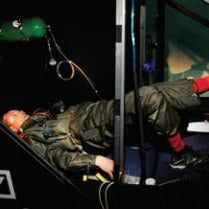
Piccard demonstrating his in-flight sleep methods.
In order to not develop thrombosis (blood clotting), the pilots trained in specialized yoga. They have daily yoga lessons with a teacher on the ground while flying via Google Hangouts.
There is no heating in the plane, and temperatures in the cockpit can vary from -4° to 30° F over the course of a day, so the pilots have to wear a specially designed suit, gloves, and underwear that stimulates blood circulation.
They also use video chat to talk to friends and loved ones to keep up their spirits and not get too lonely. "In order for this plane to work, you have to run two kinds of energy in parallel," Piccard told BuzzFeed News. "The solar energy of the plane, and the emotional energy of the pilot."

Breaking life-threatening world records seems to run in Bertrand Piccard's family, members of which have broken the records for both the highest flight and the deepest dive.
"My grandfather was the first person to see the curvature of the earth with his own eyes," Piccard told BuzzFeed News about his grandfather, Auguste Piccard. In a hot air balloon he built himself, in 1931 Auguste became the first person to reach the heights of the upper atmosphere, when he was 47 years old.
His father, Jaques Piccard, was no less impressive. Together he and his father built a new kind of submarine and in 1960, at the age of 38, Jaques broke the world record for the deepest deep sea dive – 35,800 feet down.

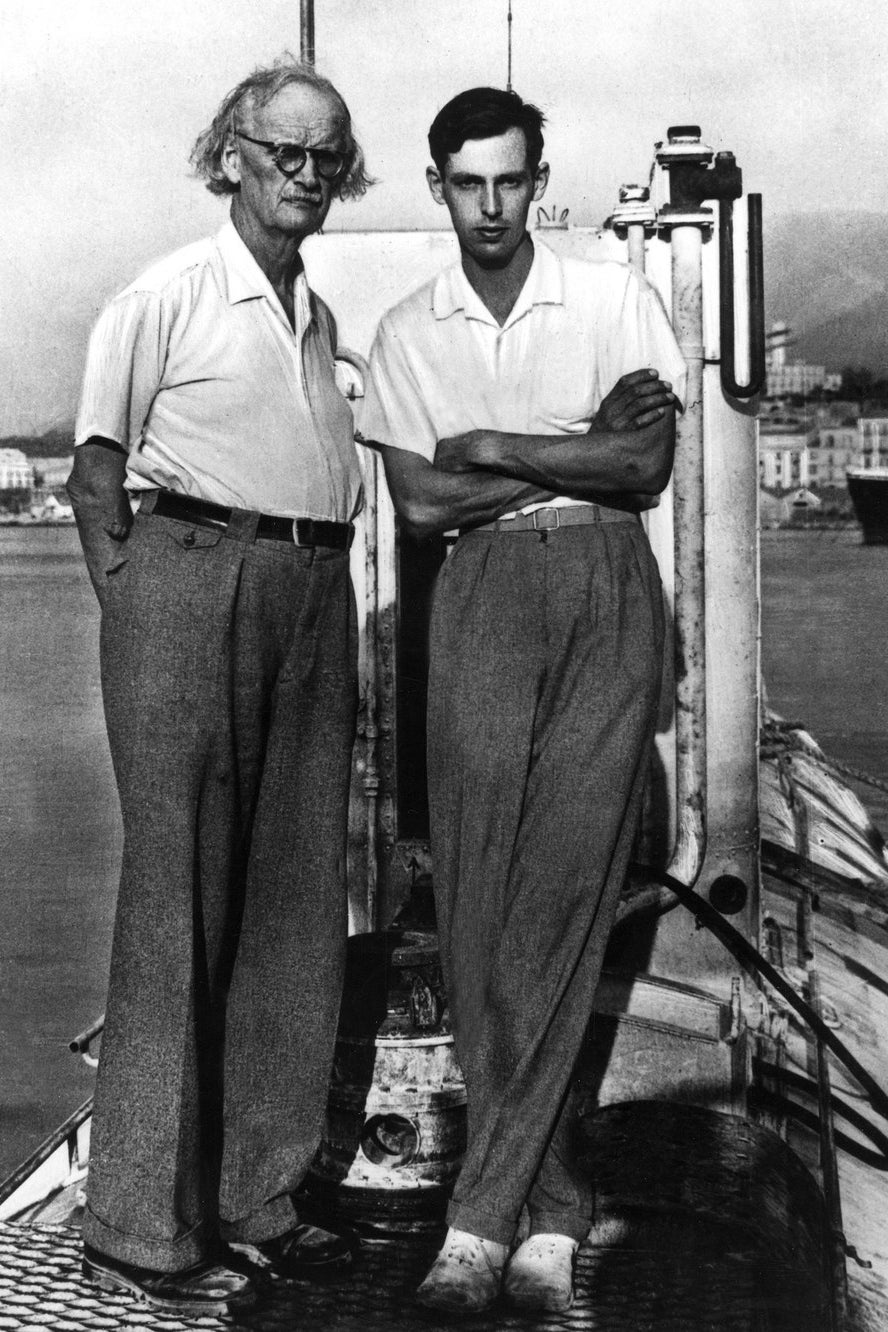
In fact, Piccard himself already broke a world record in 1999 when he became the first person to travel around the world non-stop in a hot air balloon.
And just to show off, he did it in 20 days. "Unfortunately my father is not around now to see Solar Impulse take flight," Piccard said, "but I know he would love it."
When Piccard received an award for his balloon trip, he said his father announced to the audience, "I am proud to be the son of my father, now I am proud to be the father of my son."

It's because of this heritage that his wife and three children aren't completely terrified for his safety, Piccard claims. "They know me only as a person who flies, they know I've always been this way."
His wife, Michele Piccard, works full time on the Solar Impulse project as the "corporate identity manager."
"It's important to my whole family to spread the message about clean tech," Piccard assured BuzzFeed News. "It's a family project and it's a life project."
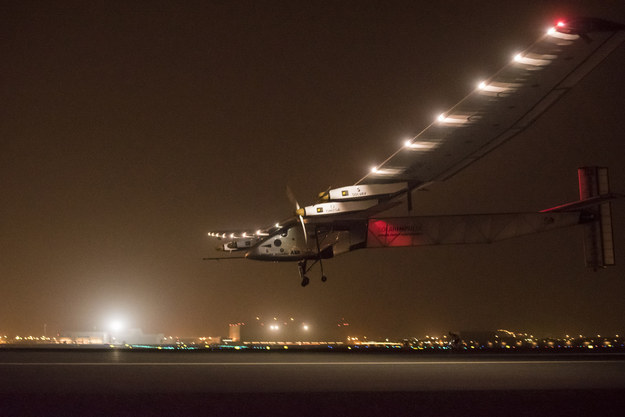
Borschberg is the true pilot of the team, and no stranger to breaking world records either.
Before completing the first 24-hour solar-powered flight in 2010, Borschberg was a pilot in the Swiss Air Force for over 20 years.
He and Piccard met when Piccard approached the Swiss Institute of Technology about the possibility of a solar airplane and they put him in touch with André to run a temporary study.
"After nine months of working together we decided it was a good idea to continue doing it," Piccard said. "That was 12 years ago."
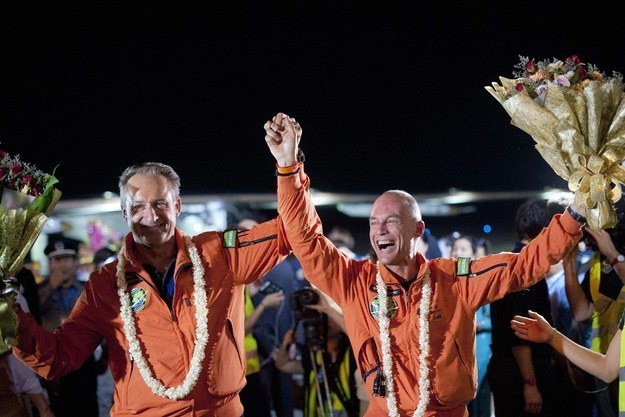
Though the pilots are excited about exploring the unknown and breaking world records, they also have a more holistic reason for this flight, as well: Saving the environment.
"Something people seem not to realize," Borschberg emphasized, "is that instead of trying to produce more energy and depleting our resources, we should be trying to better use the materials we already have."
By flying around the world using clean, renewable energy with no carbon footprint, the pilots intend to spread the message that this is possible for other technologies as well.
"Everything this plane is made of can be used anywhere around the world for different purposes," Borschberg said, reiterating that the mission's true purpose is to demonstrate the power of renewable energy.
"It's true we're flying at a slow speed and at the whims of the weather," Piccard said. "But when the Wright brothers first flew, they couldn't transport 200 passengers across the world either. ... This tech has more potential than people realize."
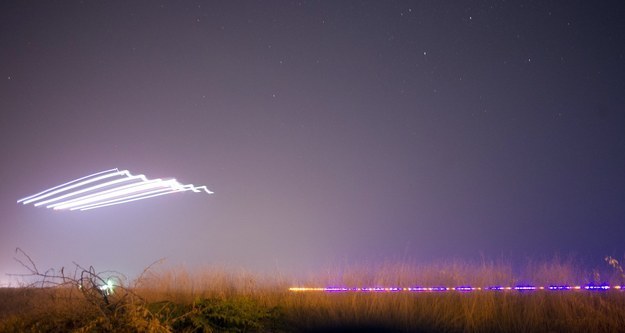
Good luck and bon voyage, gentlemen.
